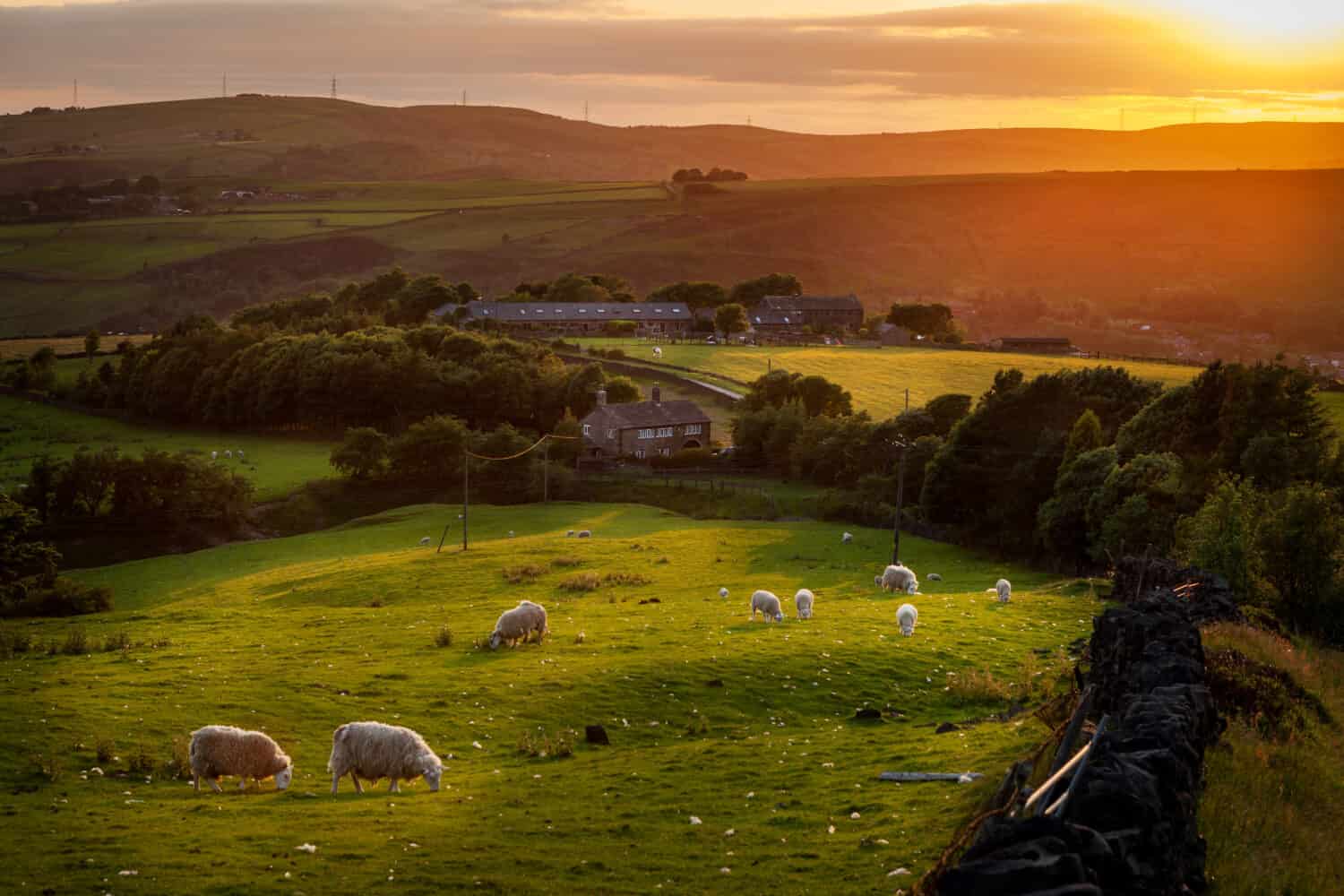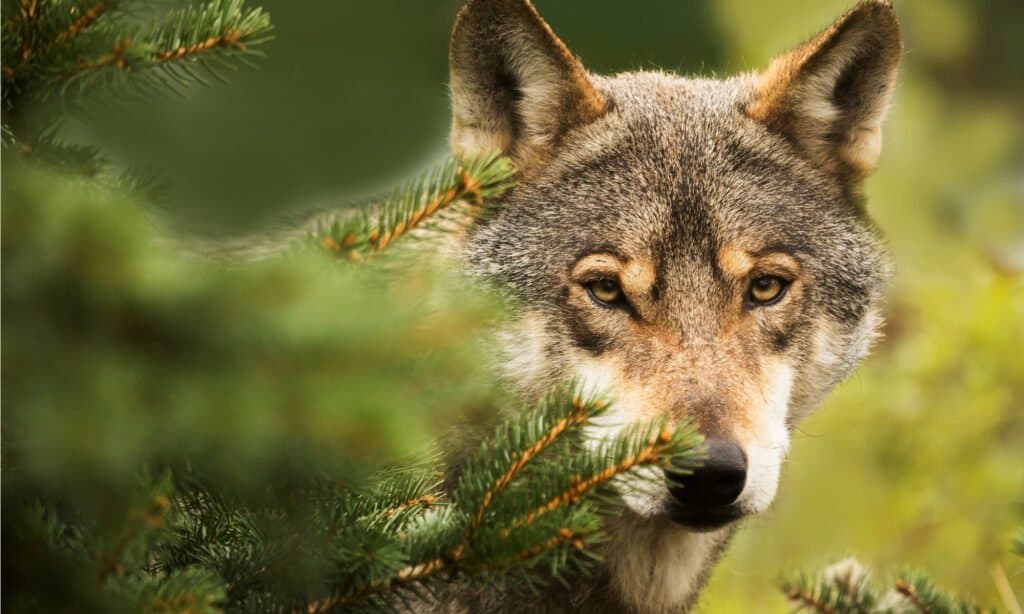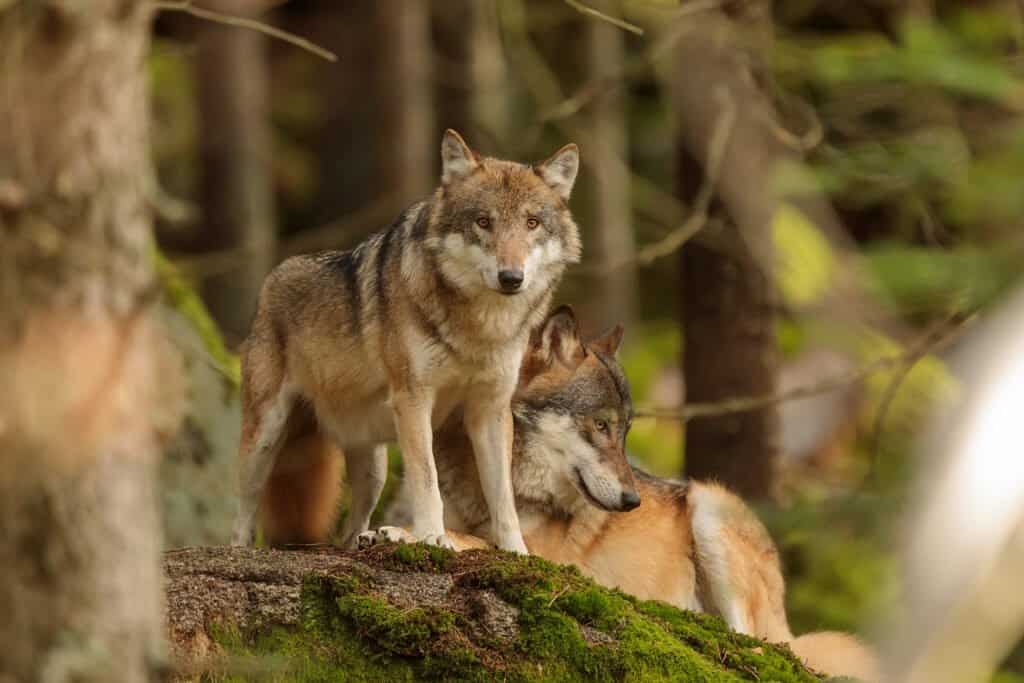When you think of the English countryside, you probably conjure images of a patchwork of green fields, meandering roads, and grazing sheep amid small charming villages. However, the England of the past was not always so tame. The country was once a wild place with dense forests filled with large apex predators, including European brown bears, wolverines, lynxes, and wolves.
If wolves once roamed the country, what has happened to them, and are there any wolves left in England? Read on to find out.
Are There Wolves Left in England?

Today, sheep graze peacefully on the land that wolves once roamed.
©SAKhanPhotography/Shutterstock.com
No, there are no wild wolves left in England today. Wolves are long gone from the country, having been hunted to extinction hundreds of years ago. However, you can spot a wolf wandering through an ancient forest in Great Britain. It’s not in the wild but in a wildlife enclosure.
Bear Wood is an exhibit about 90 minutes from the city of Birmingham. In Bear Wood, wolves, bears, and other long-extinct animals can roam freely in the dense woodland. The goal of the project is to give visitors a look at England before it was tamed. At a time when wild animals still wandered through deep English forests. Visitors can spot European gray wolves, European brown bears, Eurasian lynxes, and wolverines from a safe, elevated walkway above the forest floor.
The European Gray Wolf (Eurasian Wolf)

The Eurasian Wolf was driven to extinction in England hundreds of years ago.
©Michal Ninger/Shutterstock.com
The Eurasian wolf (Canis lupus lupus) is a species that lived in England many years ago. It’s the world’s largest subspecies of gray wolf, though its size can vary by region. Typically the males weigh anywhere from 70 to 130 pounds (32 to 59 kilograms). Today, the Eurasian wolf can be found in the wild in Western Europe, Russia, Scandinavia, Mongolia, China, and the Himalayans. Their preferred habitat is forests, mountains, and plains.
Eurasian wolves are social animals, living in packs. They raise their litters in dens, and males contribute by bringing food back to the pups. Eurasian wolves mainly eat deer, livestock, and wild boar. Although in Asia they’ve been known to prey on animals as large as yaks.
Eurasian wolves tend to form smaller packs and have smaller territories than their North American cousins. This is likely because they have adapted to closer contact with humans than wolves in North America.
History of Wolves in England
Though wolves do not roam freely in England today, they were once abundant. Scientists believe packs of wolves crossed the land bridge from Europe into England around 10,000 to 12,000 years ago (the end of the last Ice Age.) The wolves were likely following prey, such as migrating deer and elk.
As human populations grew in England during the Middle Ages, wolves were at odds with farmers and their livestock. Wolf hunting was popular and used to pay tribute to kings and nobles. By 1000 AD, the wolf population was in decline. The final blow happened in 1281 when King Edward I ordered the extermination of all wolves from England. Within the next hundred years, it’s believed wolves were driven to extinction in the country.

Wolves migrated to England at the end of the last Ice Age across the land bridge.
©Michal Ninger/Shutterstock.com
There are varying reports of how the “last wolf of England” met its demise. A famous legend states the very last wolf was shot at Humphrey Head after a lengthy chase around the countryside. However, reports differ as to when the final wolf was killed in England. Further, there have been several reports of stray wolves spotted in England and Scotland, up until the 18th century.
Conservation of the Eurasian Wolf
Today, wolves are a protected species under the European Union. In some European countries, efforts have been made to bring back wolf populations. Today, in Sweden, the gray wolf is fully protected. And in Poland, wolf populations have been increasing. It’s believed up to 12,000 wolves are living in Europe today. These wolves help habitats remain balanced by keeping deer and wild boar populations under control.
Could Wolves Make a Comeback in England?
Conservationists hope to bring the wild gray wolf back to England. Experts say there is enough habitat and wild prey to sustain a wolf population. However, at this time the idea does not have the full support of the public. Experts believe wolves in England could help reduce the overpopulation of deer, increase biodiversity, and improve the landscape. But there are concerns that wolves would prey on livestock and family pets. Currently, there is no plan to reintroduce the wolf to England.
The photo featured at the top of this post is © Sergey Uryadnikov/Shutterstock.com
Thank you for reading! Have some feedback for us? Contact the AZ Animals editorial team.






